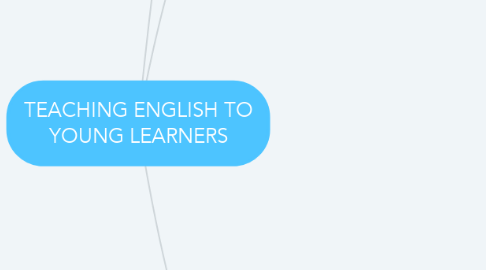
1. Reasons for an early start
1.1. The value of English for Education and Employment
1.1.1. English is a lingua franca used for business, media and communication, science and technology
1.2. The benefits of Early Language Learning
1.2.1. The value of increased time
1.2.2. The possibility of better pronunciation and fluency
1.2.3. The possibility of greater global awareness and intercultural competence
1.2.4. The value of bilingualism: mental flexibility
2. Planning for success in EYL Programs
2.1. Effective EYL program models
2.1.1. FLEX programs: foreign language exploratory or experience
2.1.2. FLES programs: foreign language in elementary school
2.1.3. Immersion programs
2.1.4. Dual-language or two-way immersion programs
2.1.5. Transitional and mantainance bilingual programs
2.2. Appropriately Trained EYL teachers
2.3. Culturally Appropriate materials
2.4. Continuity of Curriculum Between Primary and Secondary English
3. Considerations for Teaching Young Learners
3.1. Characteristics of Young Learners
3.1.1. Children are energetic and phisically active
3.1.1.1. Incorporation of kinesthetic activities
3.1.1.2. Total Physical Response Method
3.1.2. Children are spontaneous and not afraid to speak out or participate
3.1.2.1. Teachers can use simple songs, rhymes, chants, and dialogs with kids because they are ready to follow along
3.1.3. Children are curious and receptive to new ideas
3.1.3.1. Teachers should prepare activities that arouse student's curiosity: mistery bag. Use interesting and interesting topics
3.1.4. Children are imaginative and enjoy make-believe
3.1.4.1. Using role plays and drama games allows children to play "make believe" and pretend they are someone or something else
3.1.5. Children are easily distracted and have short attention spans
3.1.5.1. Teachers should try to break long activities down into smaller steps
3.1.6. Children are egocentric and relate new ideas to themselves
3.1.6.1. Teachers need to personalize activities
3.1.7. Children are social and are learning to relate to others
3.1.7.1. Children love to play games with each other and can cooperate to do activities
3.2. How children learn
3.2.1. Children learn by doing and by interacting with the environment
3.2.1.1. kinesthetic activities are important. Teachers can bring in realia.
3.2.2. Children need support and scaffolding by the teacher
3.2.2.1. Zone of Proximal Development: difference between the child's capacity to solve problems on her/his own and her/his capacity to solve them with assistance. The adult's role is very important in the learning process
3.2.2.2. Effective scaffolding techniques
3.2.2.2.1. Create interest in the task
3.2.2.2.2. Keep children on task
3.2.2.2.3. Model the task, including different ways to do the task
3.2.2.2.4. Control children's frustration during the task
3.2.2.3. Gardner's Multiple intelligences: it is important to cater for all of them
3.2.2.3.1. Spatial-visual (picture smart)
3.2.2.3.2. Bodily-kinesthetic (body smart)
3.2.2.3.3. Musical (music smart)
3.2.2.3.4. Linguistic (word smart)
3.2.2.3.5. Logical-mathematical (number smart)
3.2.2.3.6. Interpersonal (people smart)
3.2.2.3.7. Intrapersonal (self smart)
3.2.2.3.8. Naturalistic (nature smart)
3.3. How Children learn English
3.3.1. Children need a learning environment similar to first language acquisition
3.3.1.1. Language should be authentic and contextualized. A class should be meaningful and purposeful in order to motivate students
3.3.2. Children do not learn language through explicit grammatical explanations
3.3.2.1. Avoid using grammatical terms and rules that young learners do not understand
3.3.3. Children learn language through lots of meaningful exposure and practice
3.3.3.1. Give plenty of comprehensible input. Use English as much as possible.
